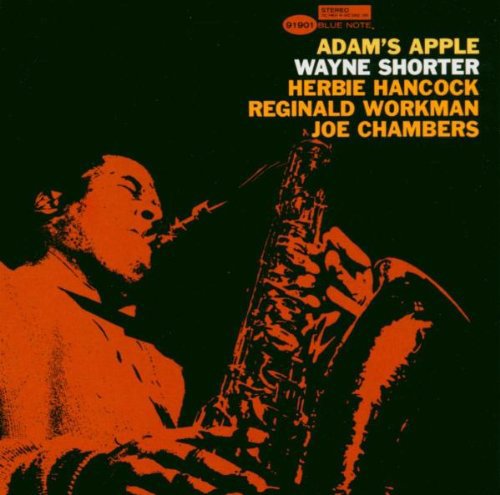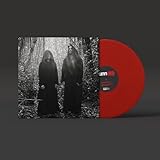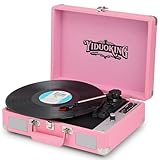Wayne Shorter Vinyl Records Lps For Sale
Check out these new and used Wayne Shorter vinyl records LPs for sale. We recommend starting your Wayne Shorter vinyl collection with the essential albums The All Seeing Eye, Adam’s Apple and Speak No Evil. Our inventory is always changing, so check back often, or browse our list of vinyl records for sale from jazz musicians.
Auto Amazon Links: No products found. No products found.

Wayne Shorter: Jazz Mastery in Analog Resonance
Exploring Wayne Shorter Vinyl’s Journey Through Time and Sound
Wayne Shorter, a name synonymous with jazz innovation and sonic brilliance, has left an indelible mark on the music world. His journey, as reflected in the analog resonance of his vinyl releases, is a captivating narrative of artistic evolution. This article delves into the profound legacy of Wayne Shorter Vinyl, exploring key albums, their distinctive qualities, and the artist’s influence on both contemporaries and subsequent generations.
The Birth of a Jazz Legend
Wayne Shorter’s musical odyssey began in Newark, New Jersey, in 1933. Early exposure to the vibrant local jazz scene and his formal education at New York University laid the foundation for a career that would redefine the boundaries of the genre. After honing his skills with Art Blakey’s Jazz Messengers in the late 1950s, Shorter joined the Miles Davis Quintet, where he became an integral part of the groundbreaking “Second Great Quintet.”
Classic Vinyl Discography
1. “Speak No Evil” (1966)
“Speak No Evil” stands as a pinnacle in Shorter’s discography and is a must-listen for any jazz enthusiast. Released on Blue Note Records, this album showcases Shorter’s compositional genius and his ability to seamlessly blend hard bop with avant-garde elements. The title track, with its haunting melody, exemplifies Shorter’s unique voice as a saxophonist and composer.
2. “JuJu” (1965)
“JuJu” marks a transition in Shorter’s approach, incorporating more complex harmonic structures. The album’s eponymous track, a mesmerizing journey through intricate improvisations, exemplifies Shorter’s growing penchant for pushing jazz into uncharted territories. The interplay between Shorter and his fellow musicians creates a sonic landscape that captivates and challenges the listener.
3. “Adam’s Apple” (1967)
Released during Shorter’s tenure with the Miles Davis Quintet, “Adam’s Apple” is a testament to the saxophonist’s versatility. The title track, a dynamic composition, showcases Shorter’s ability to balance intensity with subtlety. The album’s exploration of modal jazz and freeform structures foreshadows Shorter’s later ventures into fusion.
4. “Native Dancer” (1974)
As Shorter embraced fusion in the 1970s, “Native Dancer” marked a departure from his earlier hard bop roots. Collaborating with Brazilian musician Milton Nascimento, Shorter crafted an album that seamlessly merged jazz with Brazilian rhythms. The ethereal beauty of tracks like “Ponta de Areia” and “Lila” cemented Shorter’s status as a boundary-pushing artist unafraid of genre experimentation.
5. “High Life” (1995)
“High Life” represents Shorter’s return to the forefront of the jazz scene after a period of relative quiet. The album, infused with world music influences, explores themes of spirituality and human connection. The title track, an ambitious composition blending African rhythms and jazz improvisation, is a testament to Shorter’s enduring creativity.
Influence and Evolution: Wayne Shorter’s Impact on Jazz
Wayne Shorter’s impact on jazz extends beyond his own recordings. His contributions to the genre, both as a sideman and a bandleader, have influenced countless musicians across generations. The following section explores the ripple effect of Shorter’s innovations and highlights some artists who have drawn inspiration from his work.
1. Weather Report
After leaving Miles Davis’ group, Shorter co-founded Weather Report with keyboardist Joe Zawinul. This iconic fusion ensemble pushed the boundaries of jazz even further, creating a sonic landscape that incorporated elements of rock, funk, and electronic music. Albums like “Heavy Weather” (1977) showcase Shorter’s continued commitment to exploration and experimentation.
2. Herbie Hancock
As a member of the Miles Davis Quintet, Shorter’s collaborations with pianist Herbie Hancock laid the groundwork for both artists’ future endeavors. Hancock’s embrace of electronic instruments and fusion on albums like “Head Hunters” (1973) reflects the experimental spirit he shared with Shorter during their time with Davis.
3. Kamasi Washington
In the contemporary jazz landscape, saxophonist Kamasi Washington stands as a torchbearer for the spirit of innovation epitomized by Wayne Shorter. Washington’s ambitious compositions and genre-blurring approach echo Shorter’s fearless exploration of musical boundaries.
4. Esperanza Spalding
Bassist and vocalist Esperanza Spalding, with her genre-defying sound and willingness to traverse musical landscapes, draws parallels to Shorter’s own artistic journey. Her ability to seamlessly blend jazz, R&B, and world music reflects the spirit of experimentation that defines Shorter’s legacy.
The Vinyl Experience: Rediscovering Wayne Shorter’s Magic
In an era dominated by digital streaming, the resurgence of vinyl has provided a unique opportunity for listeners to rediscover the magic of Wayne Shorter’s music in its analog glory. The warm, textured sound of vinyl adds a layer of intimacy to Shorter’s compositions, inviting audiences to engage with his work on a deeper level.
Collecting Wayne Shorter Vinyl: A Discographic Journey
For collectors and enthusiasts, delving into the world of Wayne Shorter vinyl releases is a rewarding endeavor. The following list provides a guide to some essential releases that capture the essence of Shorter’s artistic evolution:
- “Introducing Wayne Shorter” (1959): Shorter’s debut album as a bandleader, featuring a stellar lineup including Lee Morgan and McCoy Tyner. A snapshot of Shorter’s early brilliance.
- “Night Dreamer” (1964): This Blue Note classic showcases Shorter’s evolving voice as a composer. The title track, with its dreamy atmosphere, remains a standout.
- “Etcetera” (1965): Originally recorded during the same sessions as “JuJu,” this album features compositions that didn’t make the initial cut. A fascinating glimpse into Shorter’s creative process.
- “Beyond the Sound Barrier” (2005): A live recording that captures Shorter’s dynamic energy in a concert setting. The interplay between the quartet members is a testament to the enduring chemistry of Shorter’s ensembles.
- “Footprints Live!” (2002): A live rendition of Shorter’s iconic composition “Footprints,” showcasing the evolution of the piece in a concert setting. A must-have for fans of the classic tune.
Immersive Listening: Wayne Shorter Vinyl and Audiophile Appreciation
For audiophiles, experiencing Wayne Shorter’s discography on vinyl is a journey into sonic richness. The analog warmth of vinyl complements the intricate textures of Shorter’s compositions, allowing listeners to appreciate the nuances of his improvisations and the interplay between instruments.
Similar Bands: Navigating the Jazz Landscape
While Wayne Shorter’s voice in jazz is unique, several bands share a kinship in their commitment to innovation and genre-blurring. Here are some groups that align with the spirit of exploration embodied by Shorter:
- Miles Davis Quintet: The ensemble where Shorter made a name for himself, Davis’ second quintet shares the same commitment to pushing the boundaries of jazz. Albums like “Nefertiti” (1968) showcase the collective’s adventurous spirit.
- John Coltrane Quartet: Coltrane’s relentless pursuit of spiritual and sonic exploration resonates with Shorter’s own journey. Albums like “A Love Supreme” (1965) exemplify Coltrane’s quest for transcendence.
- Herbie Hancock’s Mwandishi Sextet: Hancock’s post-bop and fusion explorations with the Mwandishi Sextet parallel Shorter’s own ventures into fusion. Albums like “Crossings” (1972) showcase the group’s boundary-pushing approach.
- Kenny Garrett Quintet: Alto saxophonist Kenny Garrett’s dynamic compositions and improvisational prowess draw parallels to Shorter’s work. Albums like “Songbook” (1997) exemplify Garrett’s ability to blend tradition with contemporary influences.
Legacy and Continuity: Wayne Shorter’s Enduring Impact
Wayne Shorter’s journey through the analog landscape of vinyl is a testament to his enduring impact on the world of jazz. From his early days with Miles Davis to his groundbreaking work with Weather Report and beyond, Shorter’s exploration of sound has left an indelible mark on the genre. As artists continue to draw inspiration from his legacy, Wayne Shorter’s vinyl releases remain a timeless and immersive gateway to the sonic universe he crafted throughout his unparalleled career.

![The Life of a Showgirl[Sweat & Vanilla Perfume Orange Glitter Vinyl] #1](https://m.media-amazon.com/images/I/51SJhJbv35L._SL100_.jpg)
![The Life of a Showgirl[Sweat & Vanilla Perfume Orange Glitter Vinyl] #2](https://m.media-amazon.com/images/I/5198D2rwyNL._SL100_.jpg)


![Merry Christmas II You [15th Anniversary Shiny Starlight LP] [Amazon Exclusive] #1](https://m.media-amazon.com/images/I/51MOyCwkOzL._SL100_.jpg)

![Currents [2 LP] #1](https://m.media-amazon.com/images/I/61zjlISscDL._SL100_.jpg)
![Currents [2 LP] #2](https://m.media-amazon.com/images/I/51ETyCkBSyL._SL100_.jpg)













![[Exquisite Appearance] Built from wood and metal materials with a unique sense of layering; The streamlined corner design is truly atmospheric and stylish(Note: long hold the start button to turn the power on, and press again to start) [All in 1] Thi...](https://m.media-amazon.com/images/I/41vovGjFkeL._SL160_.jpg)





































